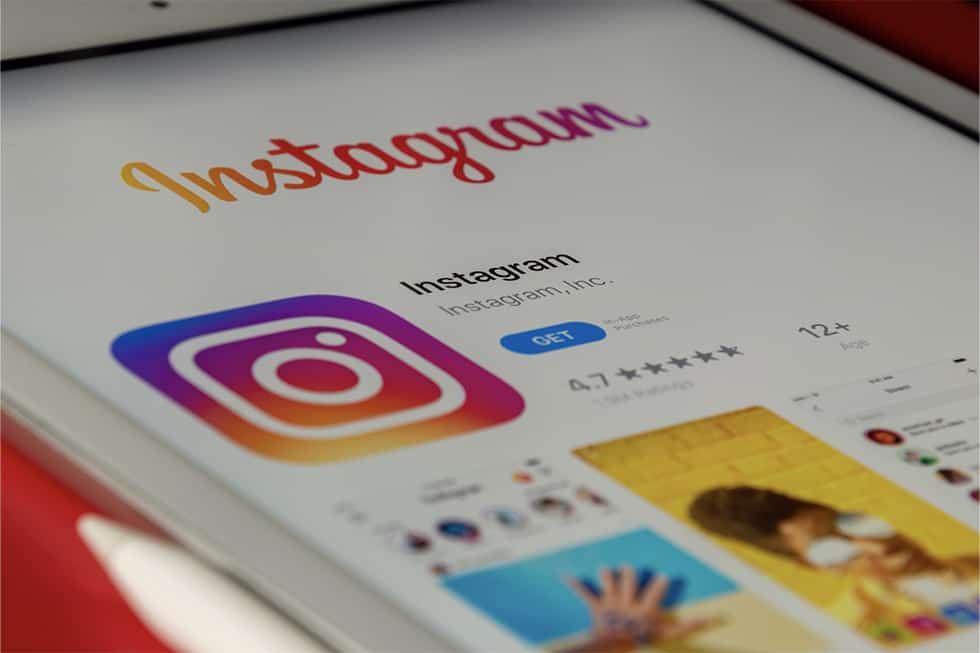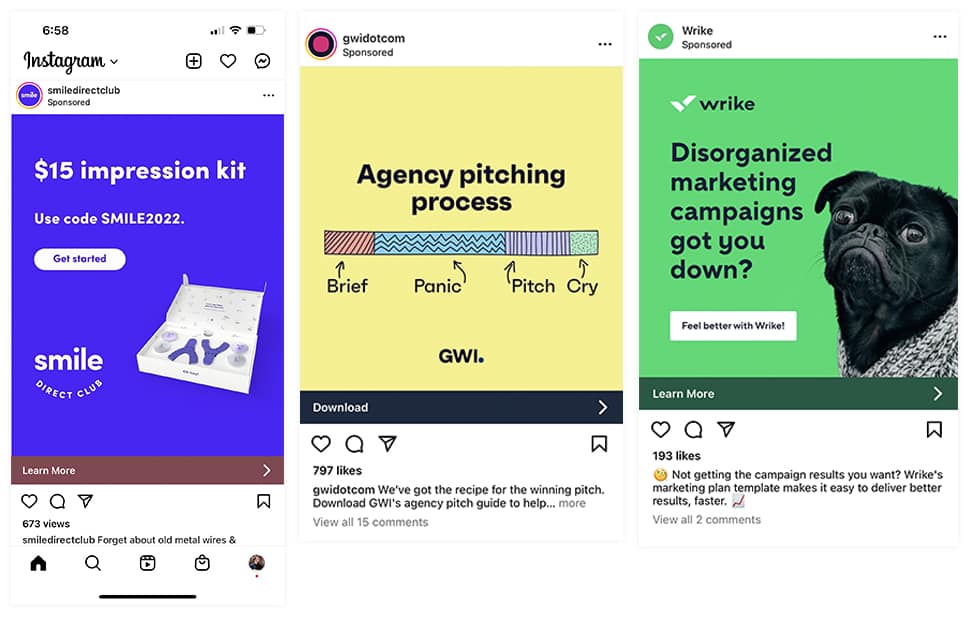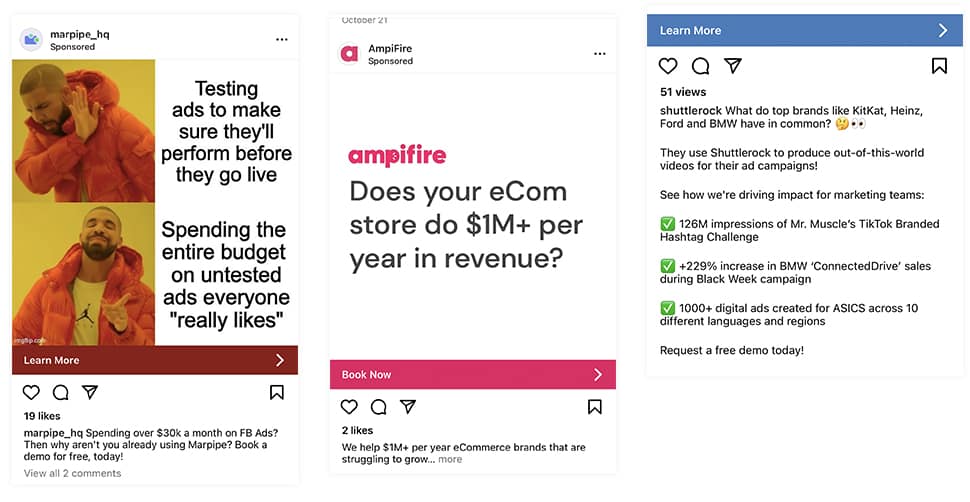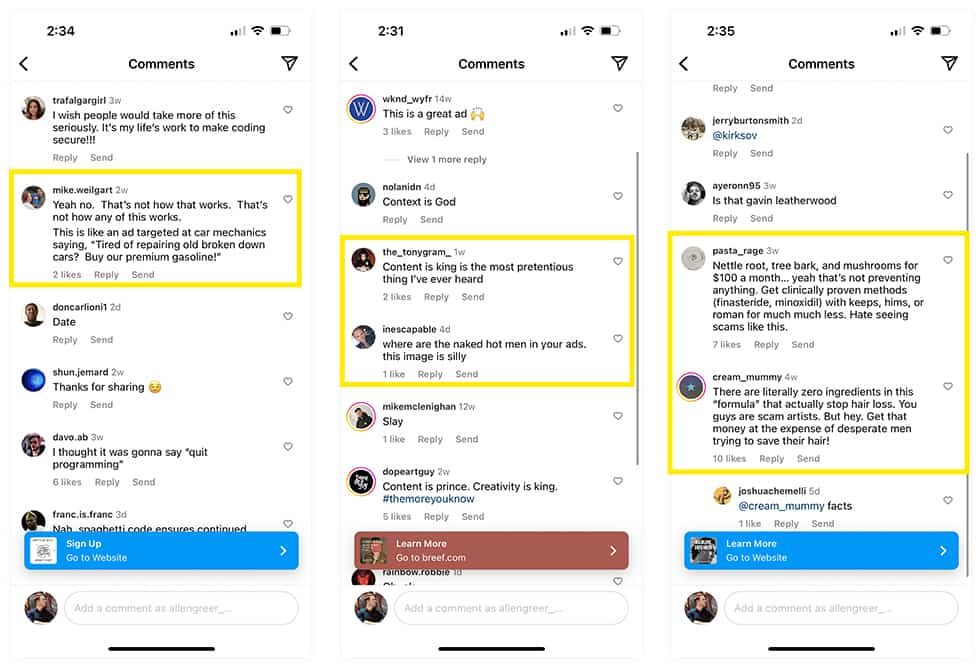
The story is all too familiar.
You’re launching a new brand or product and turn to Instagram as your marketing channel of choice to drive sales.
You run an ad for a few days and watch your budget quickly deplete with little to no conversions. Feeling frustrated and dismayed, you kill the ads and determine that Instagram ads don’t work.
This is a scenario we hear repeatedly from brand owners contacting us to help them drive sales via Instagram advertising.
This article will outline some common reasons your Instagram ads are not converting, and what to do to increase your chances of running successful campaigns that increase brand awareness, engagement and sales.
Your ad creative doesn’t grab attention
Instagram is a highly visual platform that fights for users’ attention as they scroll rapidly through their feeds until something stands out enough to make them stop and take notice. With such an overwhelming number of ads vying for eyeballs, your creative must scream “stop and pay attention to me!”.
Commanding the attention of potential customers on Instagram can be accomplished through the use of provocative graphics, color, bold messaging photography, motion graphics or video content.
Below are a few examples of brands who successfully caught our eye as we scrolled through our company IG feed. Take note of the vivid background colors, highly legible copy, playful graphics and calls to action.

Your ad copy is not compelling or convincing
Instagram ads are comprised of two critical components: the ad creative you upload, and the copy directly below the ad creative (next to your username). The ad copy should be directly related to the creative, and should be used to reinforce why people should care about what you’re selling.
You only have room for a concise message before the “…more” link is auto-added. The “more” link allows users to expand your post and read the full ad copy; however, you should never assume people will take the time to click the link. Always squeeze in a clear and direct offer or value prop to ensure it doesn’t get cut off by the “more” link.
Below are examples of ads with clear, concise and convincing ad copy. We’ve included an example from Shutterstock that reveals impressive statistics after clicking the “more” link.

Your brand creative is not appealing
Brand creative includes everything from your logo to your packaging design to the fonts and colors you choose. We all know that a major part of the D2C marketing battle is branding, so don’t skimp on your brand identity design.
A few examples of conversion-killing branding are: logos that make the company or product name hard to read, color schemes that lack contrast, poorly chosen stock imagery, poorly executed product photography, videos that don’t clearly explain what you’re selling and ads that clearly copy or mimic what a competitor is doing.
The list can go on and on but the bottom line is, be unique, be original, be compelling and be true to your brand.
You aren’t clearly explaining why your product is unique
Most brands have competitors who are selling very similar products. Your mission should be to clearly and convincingly communicate why someone should choose your brand over a competitor.
If you’re an apparel brand, what makes your clothing special? Is it the fit, or perhaps the fabric? If you sell skincare products consumers want to know about the ingredients, effectiveness and see proof that it actually works. If you’re a B2B software company, what pain point does your platform solve for me and how will it save me time or money?
Your ads lack transparency or honesty
One of the biggest mistakes a brand can make is coming off as misleading, deceptive or disingenuous. Transparency is the key to instilling trust in your audience. Trust builds confidence in your brand and confidence breeds loyal and repeat customers. These are customers who will sing your praises, refer you to their friends and family and leave you favorable reviews. Nothing is more powerful than building a community of brand advocates.
Be extremely careful when hiring actors or influencers to create video testimonials or content. We’ve seen this come off as inauthentic and fake, which your audience will see right through.
Pro tip: If you enable comments on your ads, always check them and reply often. Remember this is the internet and commenters do not hold back, so this is a great opportunity to answer questions and address any disparaging remarks.

Your budget is too low
While Instagram ads are still relatively cost effective compared to other marketing channels, there is sometimes a barrier to entry to drive enough traffic to begin seeing conversions. Let’s say you’re launching a new skincare line for women that directly competes with some of the biggest brands on the market. You are now playing in a world where a lot of money is being thrown at ads and the algorithm is simply not in your favor, meaning you’re getting pushed down so low in people’s feeds that they may not see your ad with frequency, or at all.
In cases such as the above, you’ll need to focus even more on your branding, ad creative and messaging. We all remember the infamous $4,500 Dollar Shave Club video that drove 12,000 orders in just 48 hours. This is a perfect example of a small brand leveraging their marketing prowess to catapult themselves into the market and compete directly with much larger brands.
You aren’t A/B testing ad creative and messaging
Your first idea isn’t typically your best idea, and you often can’t be certain what creative or messaging will resonate with your audience. For these reasons, it’s imperative to run split, or A/B testing to determine which ads work best.
General A/B testing methodology is quite simple. You show different pieces of creative to different segments of your audience and measure the results to see what converts at a higher rate. Here’s a great article from HootSuite that explains that basics: https://blog.hootsuite.com/social-media-ab-testing/
Your Ad targeting is off
Targeting options with Instagram ads are extremely granular. You can target based on location, demographics, interests, behavior, lookalike audiences, custom audiences and more. If targeting is not accurate you can waste a lot of money showing ads to people who are not a good fit for what you’re selling.
Create personas for your perfect customers and build audiences based on who they are. How old are they? Are they male and/or female? Where do they live? What is their income? What are they interested in? Knowing your audience intimately allows you to finely tune your targeting and optimize your ad spend.
Once you land on an audience that converts at a reasonable ROAS, create lookalike audiences to increase your reach.
Let`s Get
In Touch
Contact us today for a free consultation
and cost estimate for
your project.
We work with companies in all
industries, big or small.
Give Us a Call: 786-529-6039
Services
©2024 FUZE DIGITAL INC. Ignite Your Brand™ | privacy





